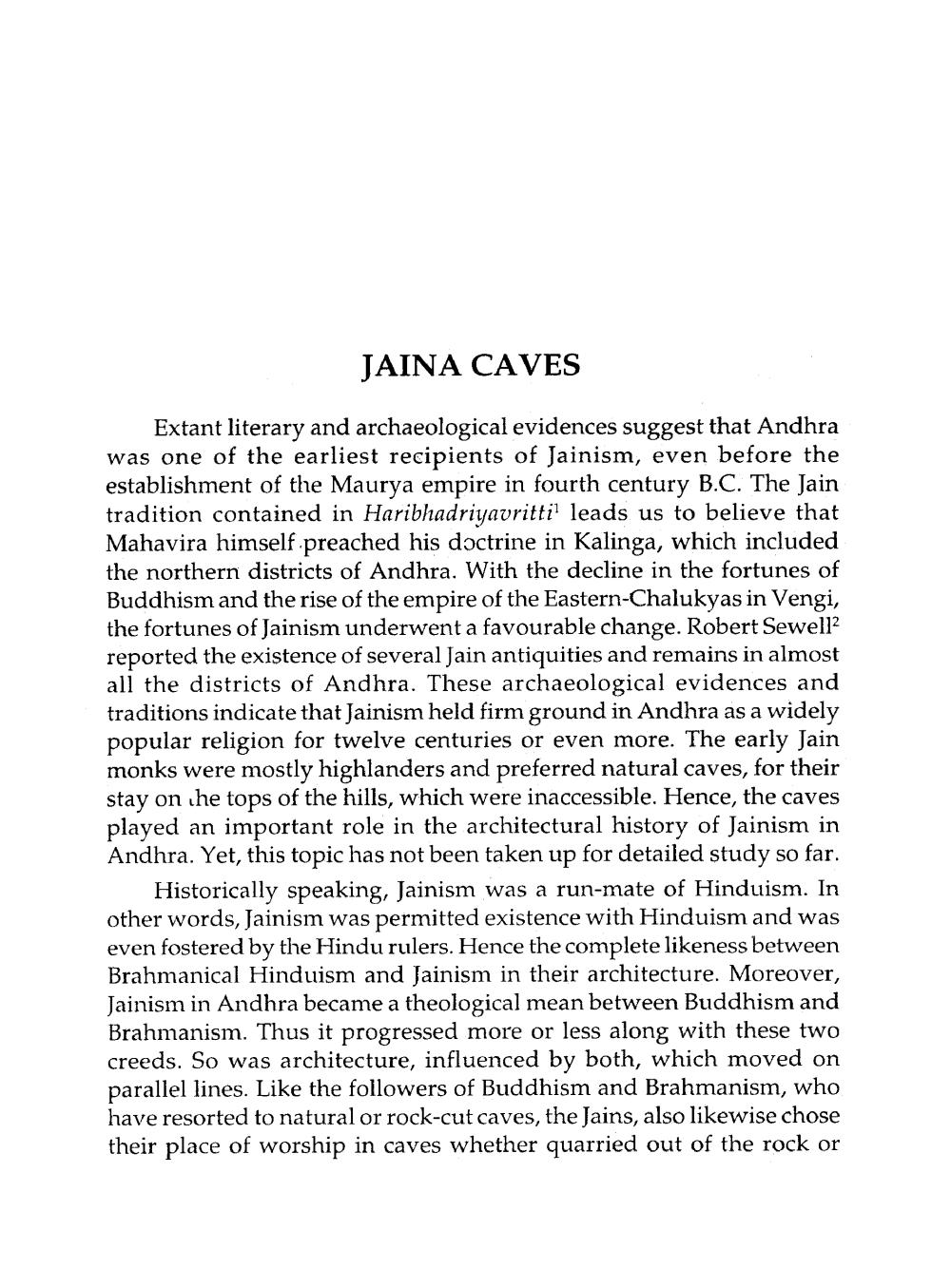________________
JAINA CAVES
Extant literary and archaeological evidences suggest that Andhra was one of the earliest recipients of Jainism, even before the establishment of the Maurya empire in fourth century B.C. The Jain tradition contained in Haribhadriyavritti1 leads us to believe that Mahavira himself preached his doctrine in Kalinga, which included the northern districts of Andhra. With the decline in the fortunes of Buddhism and the rise of the empire of the Eastern-Chalukyas in Vengi, the fortunes of Jainism underwent a favourable change. Robert Sewell2 reported the existence of several Jain antiquities and remains in almost all the districts of Andhra. These archaeological evidences and traditions indicate that Jainism held firm ground in Andhra as a widely popular religion for twelve centuries or even more. The early Jain monks were mostly highlanders and preferred natural caves, for their stay on the tops of the hills, which were inaccessible. Hence, the caves played an important role in the architectural history of Jainism in Andhra. Yet, this topic has not been taken up for detailed study so far.
Historically speaking, Jainism was a run-mate of Hinduism. In other words, Jainism was permitted existence with Hinduism and was even fostered by the Hindu rulers. Hence the complete likeness between Brahmanical Hinduism and Jainism in their architecture. Moreover, Jainism in Andhra became a theological mean between Buddhism and Brahmanism. Thus it progressed more or less along with these two creeds. So was architecture, influenced by both, which moved on parallel lines. Like the followers of Buddhism and Brahmanism, who have resorted to natural or rock-cut caves, the Jains, also likewise chose their place of worship in caves whether quarried out of the rock or




